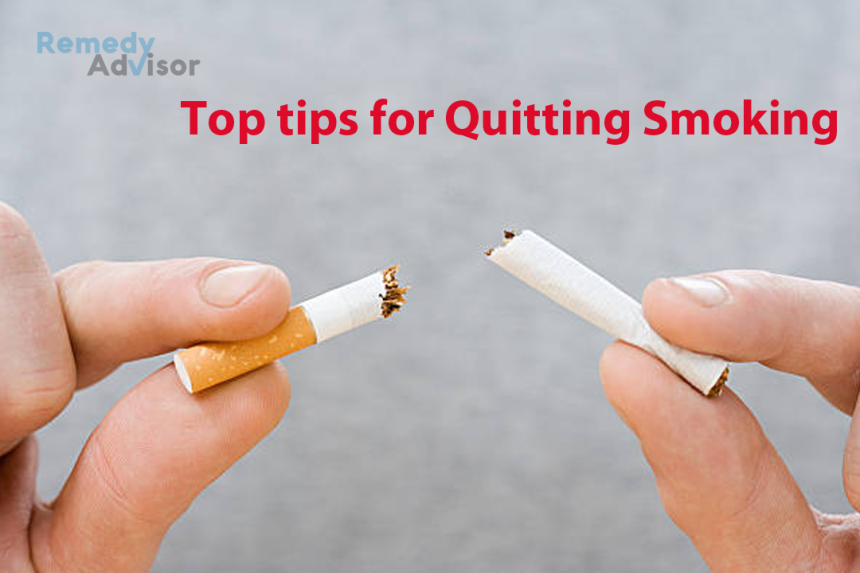Identify your smoking triggers and write them down.
If you know what causes you to reach for a cigarette, you can hijack the desire and do something else or change how you think about that activity so you will feel less like smoking. For example, do you light up every time you get behind the wheel of your car or during your morning coffee break at work? Then it’s time for you to do something different in these circumstances so you can help break the habit of reaching for the cigarette. For example, you could put a comedy CD into your player in the car or take a walk during your coffee break (and ask a co- worker to join you!) to break up your routine.
Be prepared for some withdrawal symptoms.
The good news is that withdrawal symptoms are temporary they usually fade and disappear after about two weeks. However, as your body adjusts to not being fed nicotine you may feel cranky and hungry and have difficulty concentrating. Many people experience headache, coughing, and even light tremors. All of these symptoms are a sign you are on your way to healing from the effects of smoking, so stay strong and tough it out!
Be prepared with a list of distracting activities.
Whenever you want to have a cigarette, you should be ready to do something else. Make a long list of options to cover lots of different circumstances. For example, your list might include the following: take a walk, do a crossword puzzle, call a friend, send an e-mail to a friend, read or watch something funny, visit a stop smoking Web site for support, have some sugarless gum or candy, practice deep-breathing exercises or meditate, turn up the music and dance, squeeze a stress ball. A hobby that keeps your hands occupied, such as needlework, jigsaw puzzles, playing an instrument, painting, or gardening, can be helpful.
Seek support.
Many people will help you with your efforts to quit smoking if you reach out. Beyond friends and family, who can be extremely important in helping you quit, there are also stop smoking helplines, programs offered by the American Lung Association and the American Cancer Society, smoking cessation support groups, and online support forums and chat rooms.
Get an app.
Its true there is an app for everything, and you can get apps that can assist you in your quit-smoking efforts.
Consider medications.
Temporary use of medications that help fight nicotine cravings as well as nicotine substitutes (e.g., patches, gum) can provide additional support for smoking cessation. Be sure to talk to your doctor about these products before you use them.
Avoid trigger situations whenever possible.
For example, if you used to hang out with fellow coworkers during break and have a cigarette take a walk during your break or watch a brief funny video on your smart phone or computer. Avoid venues that allow smoking and go to places that are smoke-free, such as movie theaters, libraries, and museums. Fortunately, the number of smoke free facilities and environments is increasing every day, with many cities and towns banning smoking in public places, including parks and beaches.
Get rid of the evidence.
Eliminate all reminders of smoking from your home and workplace, such as lighters, matches, ashtrays, and even any stray cigarette butts.
Stay hydrated.
Drinking lots of fluids can help cut nicotine cravings, but limit intake of alcohol and caffeinated beverages, as they can increase the urge to smoke. Try herbal teas and sparkling flavored waters instead.
Eat healthy foods and snacks.
Weight gain is a major concern of people who want to quit smoking, but you can help prevent the encroachment of unwanted pounds by chewing sugar-free gum, sucking on sugar-free candies, and crunching on carrots and raw bell pepper sticks. Another popular substitute for smoking is air-popped pop- corn (no butter or salt) sprinkled with powdered cayenne or even cinnamon.
Remind yourself every day why you quit.
Re- read the list you made of why you wanted to quit smoking.
Calculate the savings.
How much were your spending on cigarettes before you quit? Take that amount of money and put it aside every day you don’t smoke. Better yet, every time you crave a cigarette put the cost of one cigarette into a jar. At the end of every week (or every few days) check to see how much money you saved by not smoking. You can use that money to reward yourself or save it for a special occasion.







